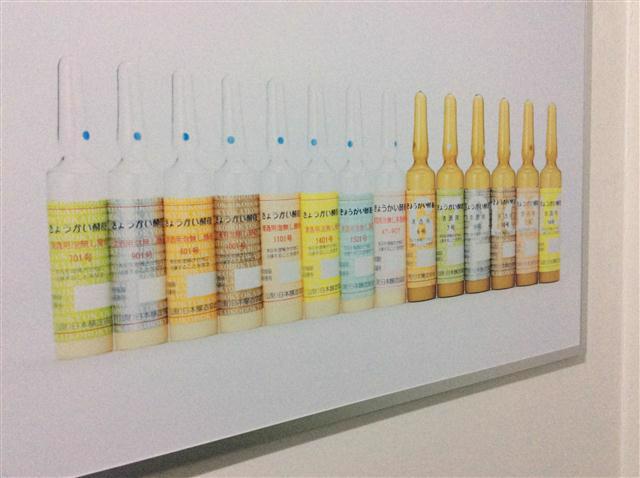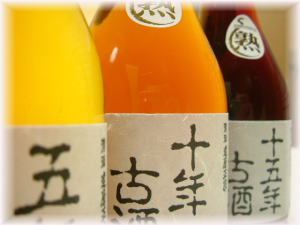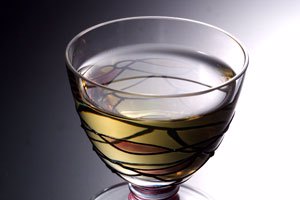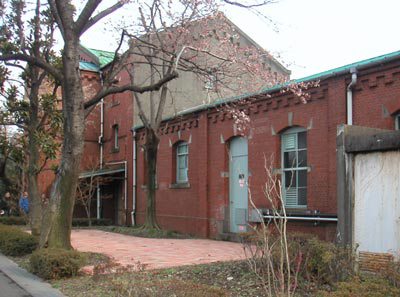|
|
|
Happy New Year,
Welcome to the year of the monkey.
May this new year, 2016, begin with peace and prosperity for all, and may that continue throughout the whole twelve months.
O-shogatsu (New Year's) in Japan is one of the only times that the country all but shuts down. No one works, people spend time with their families and revel and steep in traditional food, greetings, gatherings and sake.
Of course with sake.
Again: May 2016 be a great year for everyone, one of peace above all. Please enjoy the newsletter, and Happy New Year to all readers.
John
~~~~~~~~~~~~~~~~~~~~~~~~~~~~~~~~~~~~~~~
Sake Today Issue #7 has shipped!
Issue #7 of Sake Today has shipped and is available. This is, by far, the slickest, most attractive, and most content-rich issue yet. Kimoto sake, Fukushima Sake, New York Sushi & Sake, and articles on two breweries, Daishichi and Sohku - and more.
If you are a subscriber, thank you, and look for it soon. Did you just renew that subscription? You should have received it. Not yet a subscriber? You can take care of that
here, Why miss out on sake awesomeness?
Like all issues of Sake Today, this one as well is packed with sake information on many levels, with something for everyone interested in sake. And take note of our packages: You can order any single issue, any permutation of issues, or even all seven in a package - and/or
subscribe.
The digital version for your e-reader is ready for download too, and that includes iTunes. You can a lso view some content online as well. So check out sake-today.com now - and keep current on all things sake.
If you subsribed to Sake Today from the beginning, first and foremost,
thank you! And if you have not done so yet, now would be a great time to
renew your subscription!
Sake Confidential - Now available
Interested in sake? Pick up a copy of my book!
Sake Confidential is a beyond-the-basics guide to the sake world, and after a short introductory chapter on all things sake, it goes into depth on many topics not usually touched upon. It is a practical and concise yet complete guide to sake idiosyncrasies, misperceptions, and controversies presented in a conversational and informal tone. Easy to read and frank, it also includes sake recommendations tied into each of the topics presented.
Read a veritable cornucopia of reviews
here a New York Times brief mention
here, and order from your favorite bookseller
here as well.
|
|
Yeast for Sake Brewing
Whence does it come?
Yeast is a crucial ingredients in sake.
The three main ingredients of sake are usually given as water, rice and koji, which is steamed rice with a mold grown upon it that converts starch to sugar. But although not usually listed as an ingredient, yeast is crucial in that it converts that sugar into alcohol, carbon dioxide, and many other things that make a sake taste and smell the way it does.
Yeast does and will occur naturally in the environment, but is - with only a couple of exceptions - manually added. More than anything else the choice of yeast determines the aromas of the final sake, although as we have come to expect with sake, it ain’t quite that simple.
There are hundreds if not thousands of yeasts used in sake brewing today.
 |
|
Tons of ‘em. Oodles and oodles of ‘em. I am fond of saying that “everybody and his brother has a proprietary or special yeast.” Many (if not most) of them are recently developed and are to some degree experimental; if the resulting sake is a hit, great. If not, the brewer may move on to other yeast choices. As such, many are not long for this world. Indeed, few will last the test of time.
Not that it has always been this way. The surge in proprietary and specially developed yeast strains is about 25 years old now, I reckon. Before that the industry focused more on a handful of tried and true yeast strains that have been around for about a century. And before that, everyone depended on their own in-house ambient yeast, which alone could make or break a kura’s reputation.
Where do they come from? With so many out there, obviously there must be multiple sources. But it is probably safe to say that most sake in Japan is made using a yeast obtained from the Nippon Jozo Kyokai, known officially in English as the Brewing Society of Japan.
The "BSJ" has been around since 1906, originally as a group of researchers that had recently graduated from a governmental sake production course.
Their main functions are R&D, and of course stocking and distributing microorganisms, mainly sake yeast. The yeast strains themselves were for the most part discovered in sake breweries around Japan, and most have been around for decades and decades.
 |
|
They are meticulously reproduced and kept pure year after year, providing stable and dependable fermentation to sake breweries all over Japan. While yeasts can have all kinds of names, those from the BSJ are recognizable by their very simple nomenclature, such as #6, #7, and #9 – which belie their significance in the industry.
While numbers one to five do exist, they are no longer distributed due to what is considered to be excessive acidity. In fact, amongst the handful of yeast strains that are actively supplied, the main ones to remember are numbers 6, 7, 9, 14 and 18-01. They were named in order of discovery, and the higher the number, the more ostentatious the aromatics. (Sorta. It’s not quite that simple, but for sound-byte purposes, that’ll do in a pinch.)
In terms of how these are reproduced, it varies a bit from yeast to yeast. But basically, stock yeast cells are put into an environment that encourages reproduction. Kind of like a love hotel for yeast, I guess. The resulting yeast cells are harvested, and washed with sterilized water, analyzed for purity and quality, and then bottled in little glass ampules.
Yeast cells mutate very quickly, and so the cells must be checked to be sure
 |
|
the compounds they produce and the other characteristics are true to the original. Otherwise the acids, esters and alcohols could change, and brewers would end up with sake that is totally different from what was sought.
Once these ampules arrive at the kura, brewers will then use them by pouring the pure yeast directly into a yeast starter, or alternatively, giving the yeast cells a kick-start via a nutrient solution of koji and water. There are also other ways, of course.
However, as alluded to above, the BSJ is not the only source of yeast. Far from it! Many prefectures have their own research organizations that develop yeast strains for use by local breweries, and many breweries have their own proprietary strains as well. “Developing” yeasts really means isolating them from amongst countless strains naturally occurring in the air. (No genetic modification is done at all.)
But for almost all of these modern yeast types, rather than being a yeast that rose naturally to the top both literally and figuratively, they were the result of an active search for particular qualities like fruity aromas. Certainly there is nothing wrong with this; it is still a natural process. But many of these more modern yeast type are comparatively ostentatious in their aromatic profiles, with apple and licorice and tropical fruit more apparent than the banana and melon of olde.
Furthermore, many of these new whippersnappers amongst the ranks of yeast do not tolerate time well, in other words, the sake made using them changes comparatively quickly in the bottle, sometimes leading to bitterness in the background of the sake.
This is not to discredit or criticize their use, nor the sake to which they lead. Much of it is wonderful and popular, to be sure. The only point here is to highlight some of the differences.
However: it does seem to be that the modern yeasts, for all their lively aromatics, are very slowly falling out of favor. Perhaps a more correct way to say that is that there seems to be a slow but evident return to the more classic yeast types, in particular #6, #7 and #9, with a dollop of #14 in the daiginjo department.
Is this clearly measurable? Nah; not yet. It is still a fledgling trend. And it may not gather critical mass, and the tendency to use modern yeasts may continue. As such, not much is clear on the yeastern front at all. Vibrant ginjo aromas are still popular, even if less pretentious sake does seem to be making a comeback.
It is important to emphasize again that there is no one superior yeast or group of yeasts. As long as the sake is enjoyable by a significant number of people, anything goes. “It’s all good,” as they say. But the slight trend toward the classics, both in terms of aromas, choice of yeast, and brewing methods such as kimoto that tie in well with more less brazen yeasts, is interesting to observe.
More and more producers are providing yeast information for the sake available both in Japan and overseas. Be sure to take note of this information – and your own observations – as you enjoy sake from here on out. It can only enhance your sake experiences.
|
|
The One-Hundred Year Aged Sake Project
That's 100 years...
Last month in this newsletter we talked about aged sake, and pointed out that, although it is not quite mainstream, matured sake, known as koshu or chouki jukusei-shu, can be extremely interesting. And that is one reason the Nippon Jozo Kyokai, i.e. the Brewing Society of Japan introduced above (BSJ), a while ago began the One-Hundred Year Aged Sake Project.
Just what is the One-Hundred Year Aged Sake Project? Pretty much just what it sounds like it would be: a research project to age sake for one hundred years. Here are some specifics.
The idea was born in December of 2005, as a cooperative effort between
 |
|
the BSJ and the then-ten year old Chouki Jukuseishu Kenkyuukai, or the Aged Sake Research Group. Also, the National Research Institute of Brewing, NRIB, and Tokyo Agricultural University, known less formally as “Nodai,”( the “UC Davis” of the sake world), are helping out a bit as well. The stated purposes of the experiment are (in far less eloquent words than the original text) to “see what happens” and to “learn more about the possibilities related to aging sake.” Yeppir. Pretty much what you would expect.
Most of the sake will be aged in the iconic red-brick building (seen below) in Tokyo that housed the NRIB from 1904 until this year, when it moved to Hiroshima.
 |
|
The amount of sake progress made within those hallowed red-brick walls is unfathomable. It really is sacred ground to the sake world. The sake aged there will sit on wooden (hinoki, like cypress) shelves with no metal anywhere near them. The rest, stored at Nodai, will be handled by placing the bottles inside metal tanks. Temperatures will be maintained between 15C and 20C.
Each of the 33 brewers participating will submit one 1.8 liter glass bottle, or the equivalent amount in either titanium vessels, or Kutani or Bizen (two types of traditional Japanese ceramics) vessels. Wow. I am not sure why they insisted on those two styles of pottery, but that is cool. Very cool.
And for good measure they have thrown in one bottle of sake made in 1925, already 80 years into its aging, found in a kura in Wakayama.
Along with the one bottle of sake destined to sit a full century, each kura submitted ten
 |
|
smaller bottles (720 ml) to be used at ten along-the-way tastings to be held every ten years. The first of those tastings was held this past November, exactly ten years since it all was laid down. I was fortunate enough to be invited to that tasting, and even if only for the uniqueness of it, the event was fascinating.
Of course, it went beyond the appeal of mere uniqueness, and the aged sake that were presented displayed a fascinating range of flavors, aromas and directions of maturation. It was really difficult to try to assess them all as a whole since the range of aromas, flavors and intensities was mind-boggling.
I am thinking (or rather, hoping) I will be around for another couple-few of these, but will have to defer the tasting of the final round to someone a lot younger than I. Perhaps one of my grandchildren can represent me.
While I reiterate that very little sake is aged, most brewers do not make any aged sake at all, and that long-term aged sake is a totally different animal, I also will again add that it can be very interesting. Perhaps aged sake will be all the rage in 2105.
You can learn a bit more about the Aged Sake Research group
here although it is in Japanese. You can learn more about this project itself
here, and see a couple of pictures of the site as well. |
|
 Announcements and Events Announcements and Events
Sake Professional Course in Japan & the US
The next Sake Professional Course in Japan, scheduled for January 18 to 22, 2016, is full, thanks to worldwide sake popularity. I am planning to do yet another one in either Boston or Chicago in either March or April. If you are comfortable with that vagueness and also have the requisite interest please do send me an email to that purport.
More information about the courses is available
here, and testimonials from graduates can be perused
here as well. The three-day courses wrap up with Sake Education Council supported testing for the Certified Sake Professional (CSP) certification. If you are interested in making a reservation for a future course, or if you have any questions not answered via the link above, by all means please feel free to contact me.
~~~~~~~~~~~~~~~~~~~~
Sake Education Council Website
Please take a moment to check out the website for the Sake Education Council, the organization behind the Certified Sake Professional and Advanced Sake Professional certifications. We plan to grow steadily, strongly and continually, and we will need the support of all those that love sake to do so. Follow us through the "usual suspects" of social media.
Don't forget the archives!
Older editions of this newsletter are archived
here.
|
 Sake Education Central Sake Education Central
Sake's Hidden Stories and The Sake Notebook are now available for the Kindle, Nook and iBooks!
The Sake Notebook is now available for the
Kindle as well as the
Nook. And now, it is available for iBooks on
iTunes as well!
Sake's Hidden Stories too is now availabe on the
Kindle as well as the
Nook. And now, it is available for iBooks on
iTunes as well!
Both are
less expensive than their original pdf version too. Now is your chance to learn more about sake from your phone or tablet! Check 'em out!
Sake Dictionary App for the iPhone, iPod and iPad
"For 99 cents, this app ROCKS!!"
-a satisfied customer
There you are, perusing a menu, or standing in front of a shelf of great sake, or perhaps reading a sake newsletter… and up pops one of those hairy, pesky sake terms in Japanese. You know you have heard it many times, but dammit, you just cannot remember what it means now…
No problem! Just whip out your iPhone or iPod and fire up your trusty old version of
The Sake Dictionary. In a matter of seconds, you’ll be amongst the cognoscenti once again. But… if only you could pronounce it properly. Now that would really rock!
Done! Just tap on the term and you will hear a clear example of how to pronounce the term in Japanese. Repeat it a couple of times and the term is yours for eternity, to toss about and impress your mates.
What’s more, it’s
less!
Less than what it cost before, much less. Like less than one-seventh less. For a limited time only, the audio-enhanced version of The Sake Dictionary iPhone app is available for a mere $0.99.
The Sake Dictionary is a concise little package of all the terms you might ever come across when dealing with sake. Almost 200 of them - including sake grades, rice variety names, seasonal sake terms, special varieties, rare types, post-brewing processing words and the myriad terms used in sake production - many of which are not even familiar to the average Japanese person on the street - are listed up here with concise, useful and clear definitions and the written Japanese version as well. And now, with the new audio component, you can listen and learn just how to pronounce those terms properly.
Start to toss around Japanese sake terms like you were raised knowing them! Gain a level of familiarity hitherto unimaginable! Avoid frustrating paralysis when faced with a sake-related purchase!
Get your copy of The Sake Dictionary now and never be confused by sake terms - or how to pronounce them - again.
Get it here: http://itunes.com/apps/sakedictionary
(Note if you have already purchased it, this upgrade to the audio version is free. Just go to iTunes and get it!)
|
Are you not getting this newsletter? I realize that is like asking that
"those not present please raise your hand," but for future reference, should you spontaneously stop receiving this newsletter, please go
here and sign up again. Should that not work, please go to
www.sake-world.com.
Email newsletter services are very careful not to be considered spam enablers, but the problem is that often very valid email addresses come back bounced as invalid. It is an unavoidable problem. So if you or someone you know is not getting this, or stop(s) receiving it inexplicably, please do take a moment to double check that you are still subscribed.
Sincere apologies for the hassle, mixed with gratitude for reading this newsletter. |
I hope you have found the above information helpful and entertaining. For more information about all things sake, please check out
www.sake-world.com. Until next month, warm regards, and enjoy your sake.
Questions and comments should be directed to John Gauntner, at this
email address.
All material Copyright, John Gauntner & Sake World Inc.
Regards,
John Gauntner
Sake World, Inc.
|
|
